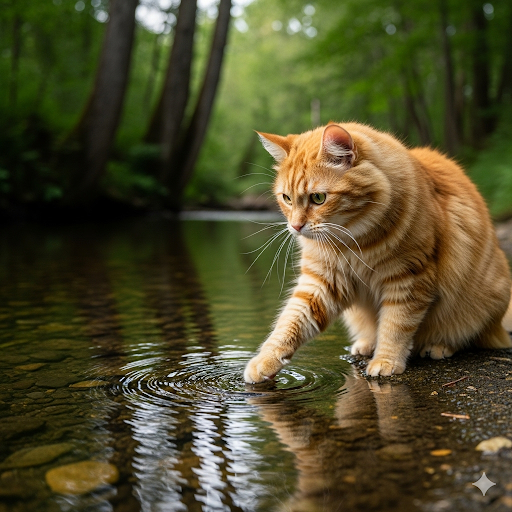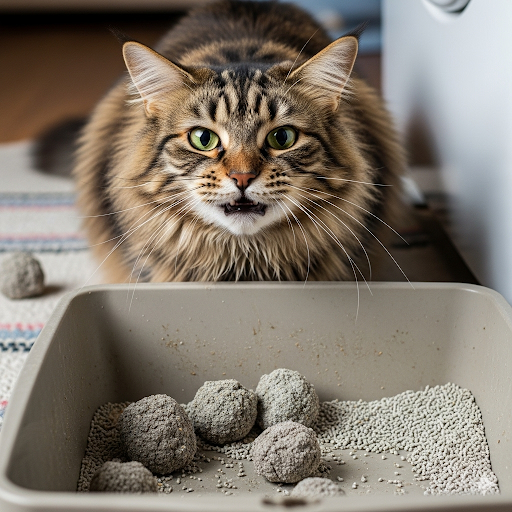
Cats are beloved companions, but they come with their own set of challenges—especially when it comes to maintaining a clean and odor-free home. One of the most popular solutions pet owners turn to is cat litter deodorant. Marketed as an effective way to neutralize odors and keep your home smelling fresh, many cat owners find themselves disappointed when these products don’t deliver on their promises. In this blog, we’ll explore the reasons why cat litter deodorant often falls short, and what you can do to truly manage odors in your home.
Understanding Cat Litter Deodorant
Before delving into the reasons behind the ineffectiveness of cat litter deodorant, it's essential to understand what these products are and how they’re marketed. Cat litter deodorants typically come in various forms—sprays, powders, or granules—that claim to mask or eliminate the unpleasant smells associated with cat waste. Many are scented to make the litter box area smell more pleasant, while others boast natural ingredients that purportedly neutralize odors.
The Appeal of Deodorants
The promise of an easy solution to one of the biggest challenges of cat ownership is appealing. For busy pet owners, the idea of simply sprinkling a product into the litter box to eliminate odors is attractive. This convenience is a significant part of why many people invest in cat litter deodorants, hoping to simplify their cleaning routine while keeping their homes fresh.
The Reality of Cat Odors
To understand why deodorants often fail, we must first look at the nature of cat odors. Cat waste comprises two primary components: urine and feces. Each produces its own set of odors:
-
Urine: Cat urine contains ammonia, which is notoriously pungent. When litter absorbs urine, it may mask the smell temporarily but cannot neutralize it entirely. As the litter becomes saturated, the smell can become overwhelming, regardless of any deodorant used.
-
Feces: The odor of cat feces is more complex, with various compounds contributing to its unpleasant scent. Deodorants may claim to neutralize these odors, but many lack the scientific backing to support their efficacy.
Understanding the sources of these odors helps clarify why many deodorants simply cannot keep up with the task.
Why Cat Litter Deodorants Fall Short
1. Masking vs. Eliminating Odors
Many cat litter deodorants primarily work by masking odors rather than eliminating them. They may have strong fragrances that temporarily cover up the smell but do nothing to address the source. Once the scent of the deodorant fades, the underlying odor remains, often making the situation worse.
2. Chemical Composition
Some deodorants contain chemicals that may not effectively neutralize odors. Instead, they may simply alter the smell without addressing the root cause. Additionally, these chemicals can sometimes interact negatively with the litter itself, leading to clumping issues or altering the texture.
3. Litter Quality
The effectiveness of any deodorant is also closely linked to the type of cat litter being used. Not all litters are created equal—some are better at controlling odors than others. For instance, clumping clay litters tend to do a better job of sealing in odors compared to non-clumping varieties. If the litter itself is poor quality, no amount of deodorant will make a significant difference.
4. Litter Box Maintenance
Cat litter deodorants can only be a supplementary solution; they are not a replacement for proper litter box maintenance. Regularly cleaning the litter box, replacing the litter, and ensuring it is in a well-ventilated area are crucial for controlling odors. If these steps are neglected, even the best deodorants will struggle to keep up.
5. Environmental Factors
Humidity, temperature, and airflow can all affect how odors are perceived in a home. In a damp or poorly ventilated space, cat litter odors may linger despite the use of deodorants. Conversely, in well-ventilated areas, odors may dissipate more quickly, rendering the deodorant less noticeable.
6. Overuse and Compounding Fragrances
Some pet owners may become overzealous with deodorant use, applying it more frequently than recommended. This can lead to a build-up of fragrances that not only fail to mask the odor but also create an overpowering scent in the home. The result can be an even less pleasant experience than using no deodorant at all.
7. Sensitivity to Fragrances
Not everyone enjoys strong scents, and many individuals are sensitive to the chemicals and fragrances used in deodorants. This can lead to discomfort, allergic reactions, or simply a preference for a more neutral-smelling environment. In such cases, deodorants may not only fail to work but can also become a nuisance.
Alternatives to Cat Litter Deodorants
If cat litter deodorants aren't the answer, what can pet owners do to manage odors more effectively? Here are some alternative strategies:
1. Choose the Right Litter
Investing in high-quality cat litter can make a significant difference in odor control. Look for litters designed specifically for odor absorption, such as those with activated charcoal or natural ingredients like probiotics. Clumping litters generally help contain odors better than non-clumping varieties.
2. Frequent Cleaning
Regularly scooping the litter box—at least once a day—can help minimize odors. It’s also important to completely change the litter every month or so, depending on the number of cats and how soiled the litter becomes.
3. Deep Cleaning the Litter Box
Every few weeks, wash the litter box with mild soap and water to remove any residue that might contribute to odors. Avoid harsh chemicals that can linger and may harm your cat.
4. Ventilation
Ensure the area where the litter box is located is well-ventilated. Good airflow can help dissipate odors and make the space more pleasant. If possible, consider placing the litter box near a window or in a room that is frequently used.
5. Avoid Odor Absorbing Litter Box
Most conventional and automatic litter boxes are made from plastic, which tends to absorb odors. With automatic litter boxes, many people don’t realize that odors can become trapped due to their complex machinery. This makes regular deep cleaning essential, especially compared to traditional open boxes. For optimal odor control, consider using a stainless steel litter box, as this material is non-absorbent and easier to keep clean.
6. Consider Litter Box Location
The location of the litter box can significantly impact odor control. Avoid placing it in small, enclosed spaces where odors can accumulate. A well-placed litter box in an open area will allow for better air circulation.
7. Monitor Your Cat’s Health
Sometimes, strong odors can indicate health issues. If your cat’s urine or feces smell unusually strong or different, it may be worth consulting a veterinarian to rule out any underlying health concerns.
Conclusion
Cat litter deodorants promise a quick fix for one of the more unpleasant aspects of pet ownership, but they often fail to deliver effective results. By understanding the limitations of these products and implementing a more comprehensive approach to litter box maintenance, cat owners can significantly reduce odors in their homes.
Investing in quality litter, establishing a consistent cleaning routine, and utilizing natural deodorizing techniques can create a more pleasant environment for both cats and their human companions. While cat litter deodorants may seem like a convenient solution, true odor control comes from a combination of good litter practices and proper care.



